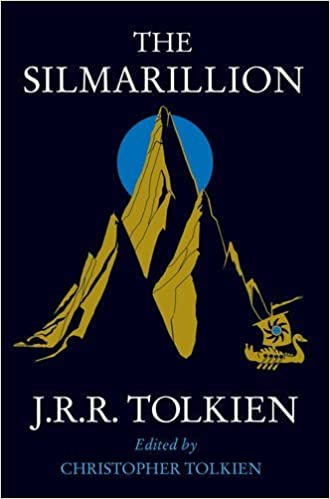School is just about out and depending on when you’re reading this, you might already be feeling the sweet, sweet release of summer.
Let’s assume you’re a nerd who likes to read, like me. Let’s also assume that you will have leisure time on your hands this summer, unlike me. Why should you spend any of it reading J.R.R. Tolkien’s The Silmarillion?
I first read (or perhaps swallowed whole is the better word) Tolkien’s The Hobbit and famous fantasy epic The Lord of the Rings in high school. The world of Middle-earth has captivated readers (and now cinema audiences) for generations at this point, and Tolkien’s take on medieval fantasy still influences the genre heavily to this day. That being said, there are two kinds of Tolkien readers.
On one hand, there are those that read the books as adventure stories and are entertained, perhaps moved by Tolkien’s prose or the storytelling in general, and that is where the journey ends. For others, initiation into Tolkien’s writing is like (to steal a device from one of Tolkien’s long-time friends and fellow writers) stepping through the wardrobe into another world, one in which you want to travel up and down and become fully immersed in the genius of its craftsman. If you are of the second variety, I think you couldn’t go wrong picking up The Silmarillion.

For the longest time, I knew of this book and had it explained to me as, “it’s a bunch of boring fake history, don’t bother.” Well, it is a bunch of fake history, but it isn’t boring. The Silmarillion as we have it today is mostly composed of Tolkien’s notes about the history of Middle-earth and the wider setting (including the lost or inaccessible lands of Beleriand, Valinor, and Númenor). Tolkien’s son, Christopher, later compiled and, in some cases, edited and added to the work in order to make it viable for posthumous publication.
In it is contained the mythology of how Arda (the world including Middle-earth and everything else on the planet) was made, about the struggles between the angelic beings called Valar, the divisions and histories of Elves and Men and the first “dark lord” of the setting, the evil Valar Morgoth. It also details the rise and fall of the lost kingdom of Númenor (from whose kings Aragorn in The Lord of the Rings claims descent) and provides a brief summary of the events of the War of the Ring. It is, in some sense, a published version of a “series bible,” a reference work that authors will sometimes craft alongside their fiction in order to make their worlds more coherent.
That sounds like a lot, but The Silmarillion is fairly economical. At around 300 pages, it’s less investment than, say, the whole Lord of the Rings trilogy. Likewise, The Silmarillion is a narrative, or collection of tales, not a dry history book. Some of the more memorable and tragic stories concern characters like Lúthien and Beren, whose love story takes up a good deal of the Quenta Silmarrilion, and the tale of Túrin Turambar. In the midst of the stories, however, which are all more or less loosely connected, you are learning the background lore of Middle-earth that someone who had just finished The Lord of the Rings might not have a good grasp of. For example, where are the Elves actually going when they pass out of the West? Who are these Númenorean people we keep hearing about? What exactly is the deal with the wizards and what are they in relation to the people of Middle-earth? What the heck is a balrog, actually?
The Silmarillion makes a good companion for LOTR insofar as it provides a bit of context that otherwise is, in my opinion, somewhat understated. For hardcore Tolkien aficionados who haven’t picked it up because they, like me, were warned it was boring—I implore you to reconsider. If nothing else, the style of the prose and pathos of the writing makes you feel like you’re reading Lord of the Rings again, and frankly, there are few better feelings in the world for me, as a reader and lover of Tolkien’s work.
Image Credit / Harper Collins

